
No, this is not a repost of last year’s Frozen City deconstruction, but it is about another Century Games hit that tasks players to survive in a frozen environment: Whiteout Survival. Both games look very much alike, especially during the first sessions. If you’re thinking there’s something fishy going on with this likeness, you are not wrong! We’ll be venturing into the 4X subgenre as a whole as well, so put on your snow boots and we’ll get cracking!
The Next Big Thing in 4X
Whiteout Survival (WS) is a 4X (Explore, Expand, Exploit, and Exterminate) game with an added Team Battler core mechanic. Unlike other 4X games like Rise of Kingdoms, which provides free-form base-building and is still the most lucrative mobile 4X title to this day, the player’s base in WS has a fixed layout. Furthermore, WS focuses more on the human aspect, as the game asks the player to take care of villagers while assembling a team to fight battles with. For the latter task, some players will find themselves searching online to find tier lists, a task that is usually reserved for Hero Collector and Team RPG games.
Century had an early soft-launch of WS in select countries on June 28th, 2022. By December 13th that year, the game went live in the rest of the world. The game entered 2023 with a bang and performed extraordinarily well right out of the gate, making it one of the top trending mobile games of the year.

Unsurprisingly, the game has done very well in Asian markets, especially in Korea. In September, it was reported that WS was the highest-grossing strategy game in Korea: “Whiteout Survival ranks 11th on the list of top-grossing games in South Korea, and it holds the 1st place among strategy games. Its revenue is more than twice that of Top War: Battle Game, which holds the second spot.”
In this article, we’ll look into the success of WS and what Century Games has done to bring a new 4X game to market so successfully. In a broader sense, we’ll also look at the future of 4X as a subgenre and how WS reveals the next step in its evolution to stay relevant.
Who’s Century Games?
First of all, let’s remind ourselves who the developer behind the game of today’s piece is. In 2016, FunPlus sold one of its studios, DianDian Interactive, which was known for hits like Family Farm Seaside, Barn Voyage, and Royal Story, to the Century Group, a listed company on the Shenzhen Stock Exchange. Century Group then became Century Games. Soon thereafter, Century helped publish large-scale strategy game King of Avalon, made by another FunPlus studio called KingsGroup. A year later, in 2017, it did the same with Guns of Glory. As recorded on data.ai, both these games have grossed well over $1B in lifetime revenue by now (both with lifetime download numbers of ~80M). The games were then returned back to FunPlus in 2022 (for more details, see the Frozen City piece).

As we can see in the graph above, Whiteout Survival started heavily outperforming all other games in Century’s publishing portfolio (including both FunPlus titles) since last summer, making it one of the smash hits of 2023. At this rate, it will have surpassed lifetime revenue of each of the KingsGroup-developed games by the end of this year, and is already Century’s most lucrative product ever.
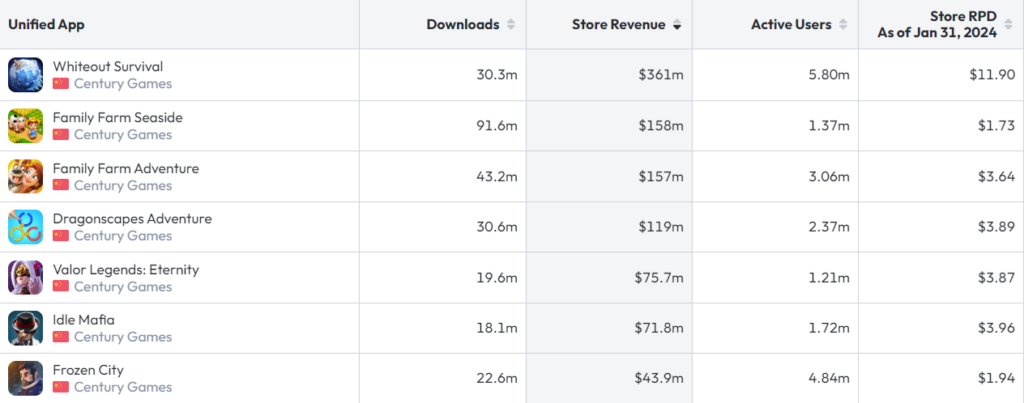
As can be seen from Century’s portfolio, it is no stranger to 4X, but how is this hardcore subgenre actually doing?
A Quick 4Xposition
4X is a highly lucrative market segment in the Strategy genre. On mobile, the three most successful 4X games to date — Rise of Kingdoms, Lords: Mobile, and Game of War — all have grossed more than $2B during their lifetimes. On top of that, there are around 10 other >$1B unicorns like State of Survival, Evony, Top War, and Puzzles & Survival. Both aforementioned FunPlus titles (King of Avalon and Guns of Glory) are also part of this list, which explains — at least partially — why WS is such a polished product.
Historically, everything in 4X games revolves around resource accrual, exemplified by games like Game of War. The player’s main goal is to be able to send as many troops as possible around a huge multiplayer map and gain power faster than others, with the ultimate goal of ruling the region.

Look at 4X as the equivalent of PC’s real-time strategy, but on mobile, as it serves the exact same player motivation of exploring and expanding territory, albeit at a much slower pace and a much greater scale.
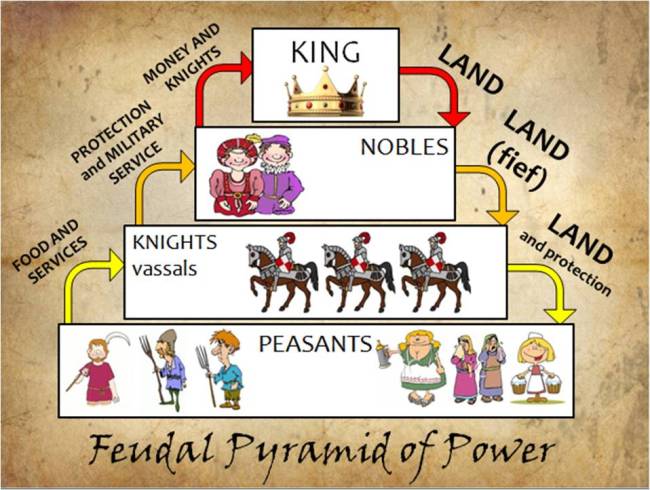
Unfortunately for 4X developers, the user acquisition environment has become highly unfavorable after the UA apocalypse. Just like on PC, strategy games are played by the most hardcore segment of gamers worldwide, but these players are now much harder to find on mobile, which means games can’t purely be 4X anymore. Cost Per Install has become too high as it’s too difficult to simply target 4X players.
Genre-Mashing and 4X
As a means to combat this, we addressed the phenomenon of genre-mashing in last year’s prediction post, which has definitely taken more shape with the release of WS. This is nothing new; past successes in the genre have added popular mechanics from other (more casual) genres. Puzzles & Survival added a Match-3 Team Battler and Top War added Merge. Looking at the very recent Puzzles & Chaos: Frozen Castle, there’s no end in sight anytime soon.
WS has an interesting mash of genres as well. As mentioned earlier, the game features a full-fledged Team Battler component, which is introduced about 20 minutes into the game. While this by itself is nothing revolutionary either (see our Puzzles & Survival deconstruction), it does bring a whole extra layer of depth into the game that synchronizes well with the 4X combat. And if you’re wondering how this is balanced together with the 4X battles on the world map, don’t fret! The hero matchups are important in only the PvE parts of the game.

While named characters that lead troop regiments are often prevalent in modern 4X games, having proper team battles woven in is definitely not a given. In Rise of Kingdoms, players can send one commander to lead their troops, and the same goes for officers in Star Trek: Fleet Command. In WS, however, there are two features that are completely disconnected from the 4X meta that provide a prominent additional purpose to the heroes. An Exploration mode provides a tangible main progression to the player’s growing hero power by featuring increasingly difficult team battles and also provides an exclusive idle resource, Steel, which we’ll address in more detail later. The second feature is a PvP Arena, built on top of the game’s squad RPG mechanics taken straight from other mega-hits like Honkai: Star Rail and MARVEL Strike Force.

Besides these two Team Battle modes, WS’ second genre-mashing technique is the most interesting one, and it begins right when players start the game.
The Most Subtle Bait n‘ Switch
One of the most important techniques of providing players with a sense of purpose is introducing the game’s setting when they boot it up for the first time. In many cases, like the infamous Match & Decorate storylines, this usually is done using an emotional hook followed by a sense of urgency.

A similar scenario unfolds in WS’ first session: Within 3 minutes, (spoiler alert) grandfather Bill succumbs to the harsh winter surroundings, upping the stakes and pressuring the player to set up camp around a big, FrostPunk-like furnace that can provide enough heat. Around the furnace, the player has to build Dorms, a Hunter’s Cabin, a Sawmill and upgrade their interiors for increased capaci- … Wait a minute ... Anyone else having a deja-vu as well?
That’s right! WS’ initial gameplay is pretty much the same as Frozen City.
Interestingly, with WS, Century is pulling a similar trick as Voodoo does with Collect ‘em All and others, where the initial gameplay adheres to the ads, but is actually very different from the main gameplay! The difference here is that it’s much more seamless and subtle, and in two genres (4X and Idle) that are usually miles apart from each other in terms of target audience.
During the first few sessions, many players won’t know the true nature of the WS beast. As far as they know, they are just having fun playing an idle base-building game. The World button is visible, but when tapped, it foreshadows the World Exploration to be something for later. Only after 90 minutes of gameplay, the 4X world opens up, which allows for a very smooth transition. For a good number of players, this is around the time they start their fourth session! A feat of game design not seen many times before in the top-grossing charts.
After the transition into a 4X experience, the old base-building features are technically still being used, but after three hours of gameplay, upgrading every bed so you can upgrade the Dorm that contains them has become nothing more than a tedious remnant of the initial idle base-building gameplay. Features to resolve these are not implemented at the time of writing.
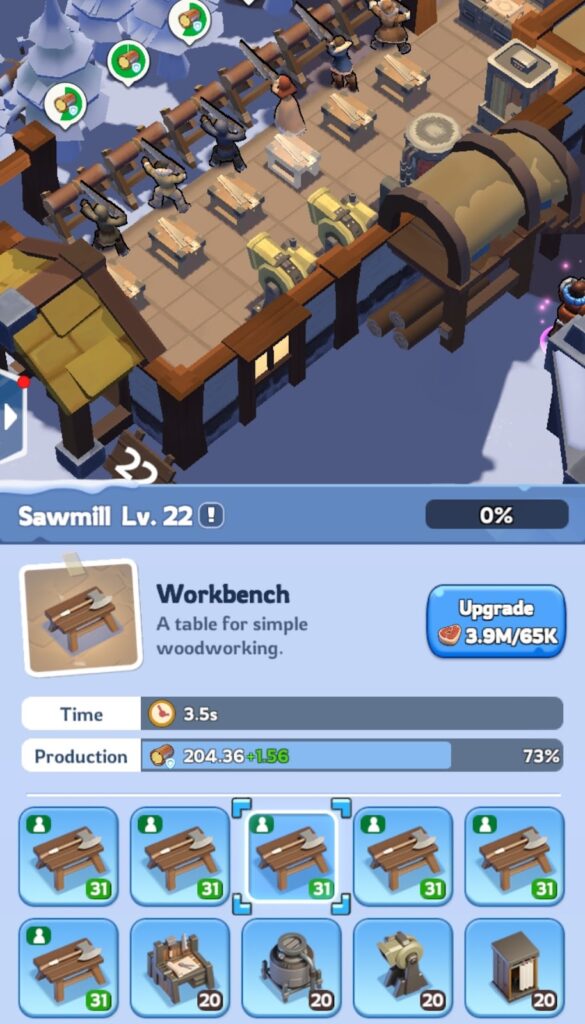
When approaching the end of the first session, WS uses the emotional aspect of survivor care — selling itself as a Frostpunk-inspired survival builder — to drive engagement, for example by showing a dramatic announcement of a snowstorm. Players are urged to make preparations within the following hour by gathering enough wood and upgrading their furnace. The imminent danger the snowstorm seems to impose is clearly meant to prolong that first session. Later on, it turns out that snowstorms like these are quite frequent and don’t have many consequences unless the furnace is turned off.
Another example of survivor care is them getting sick if players forget to turn up the furnace at night when it gets colder. Sick survivors sometimes even die, which can temporarily reduce the amount of income the player gets.
In fact, most of these scenarios are smoke screens. Dead survivors are speedily replenished, and turning down the furnace isn’t needed in the first place, as it saves only an insignificant amount of resources compared to the player’s earnings.

The bait n’ switch has a bad rep, and mostly for good reasons, as it’s often blatant, unfair, or poorly executed. In the case of WS though, it’s an impressive feat that’s nothing to be shamed for. When looking at it with an objective lens, Century Games just managed to create a very elaborate first-time user experience that seamlessly invests players into building their base. Later, players then have to start improving that base with resources, diplomacy, and troops that are mostly external to it. This lens will likely be adopted by an experienced minority of the audience, in which the brightest individuals will perceive the game as a 4X game early on, with the initial Frozen City gameplay being just part of the onboarding process. The majority of the audience, though, doesn’t know what a 4X game is, and will find themselves surprised, overwhelmed, or likely a mix of the two when the world map opens up and the other players become visible.
The use of this bait n’ switch strategy has seen increased popularity in recent years throughout multiple Strategy subgenres. Top War was one of the first, then Puzzles & Survival followed, and now WS takes it to the next level. We should also not forget that these are only the successful examples, and that (interestingly enough) they often come from Eastern developers. A notable exception to this rule being Will Harbin’s Kingdom Maker, which serves the player with additional Fallout Shelter-esque mechanics.
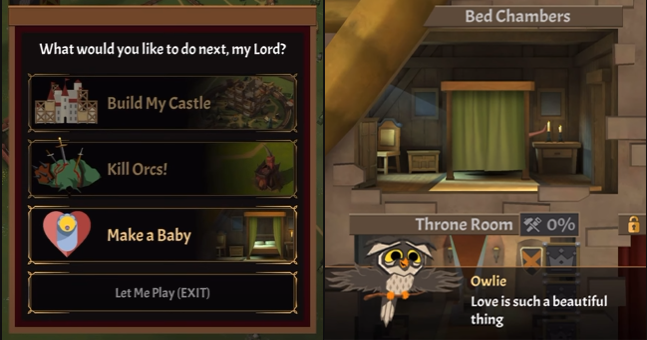
In any case, whether you call it a bait n’ switch or a highly effective genre-mash, WS’ mix of narrative, theme, and art style turns out to facilitate a killer UA strategy.
A UA powerhouse
In addition to ranking WS’ performance in Korea, the aforementioned report also states that “Successful marketing efforts and creative strategies have allowed Whiteout Survival to become a leader in South Korea's YouTube share of voice”. This is correct, but it doesn’t explain exactly what happened, because Frozen City was not only a testing ground for WS’ FTUE, it practically spawned its UA strategy as well.

Since Frozen City (FC) was released around half a year earlier, it effectively served as a theme test and source of UA for WS. Given the games were made by different studios within Century Games, one can only speculate about internal arrangements of cooperation.

FC provided a proven hook for creative UA. The theme,setting, and even some mechanics, like the giant bonfire; the survivor’s work cycles; and emotional and physical states are the same as in FC. But an Idle game doesn’t have the revenue potential a 4X game has. Far from it, actually, which is why FC seems to have been left behind.

More in-depth UA case studies of this savvy strategy are available, but in summary, the advertisement strategy for WS (and FC) consists of videos coming from a few different angles:
1. Ad as part of the funnel, directly connecting with the FTUE
These videos are most suitable as a preliminary step to the game’s first session, serving as a continuation of events after the player installs the game and starts playing. The hook has already been established, as the video clearly shows freezing survivors entering the gates of the base and being put to work.
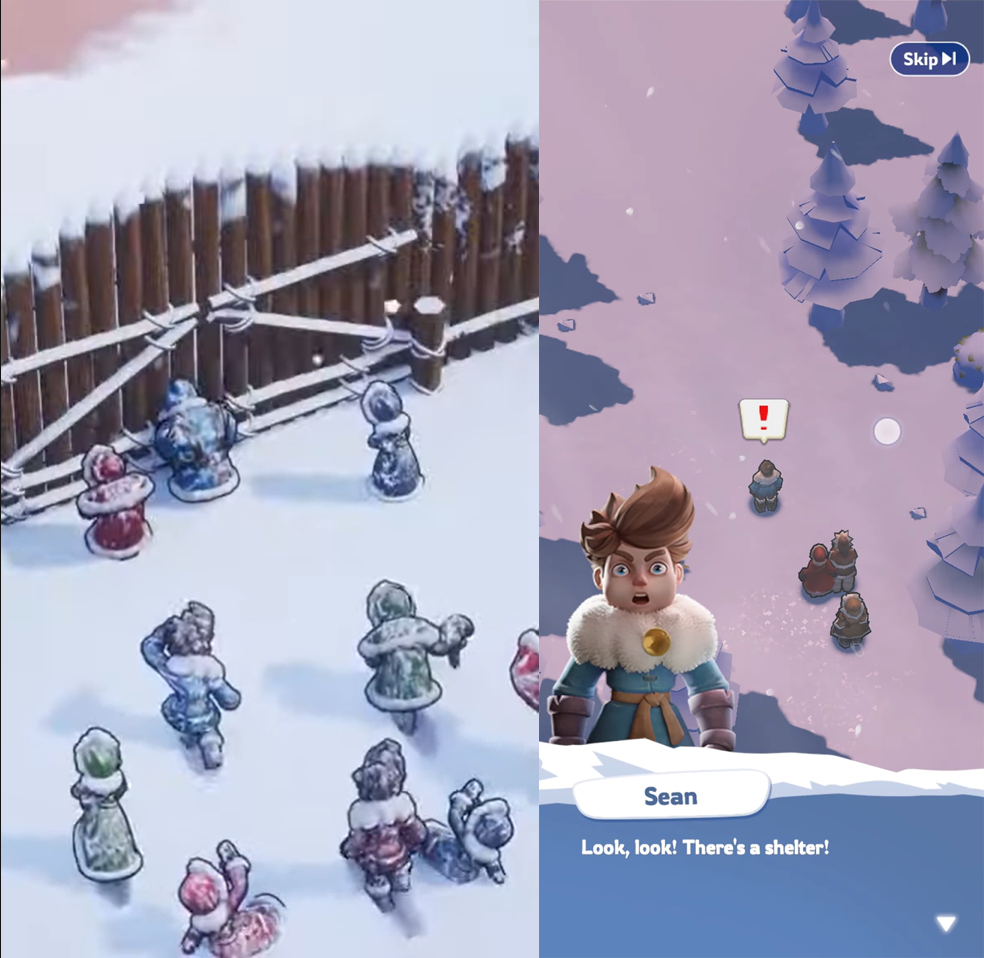
2. Focus on a proven and appealing hypercasual mechanic
In this case, finding a way through the snow to find resources is (inaccurately) pictured as the main mechanic. Whether it be snow, rocks, or grass, it has been a popular trend in hypercasual games with ‘Idle Arcade’ controls for a few years already.

3. Two-second hook and binary choices
Who doesn’t know these videos? The player is shown a predicament, and has to make a choice between two polarizing options. It’s a classic in which the first two seconds of the video (with the UFO) tries to explain why it’s so friggin’ cold on earth suddenly, which really helps bring the point home.
A slightly inaccurate representation of WS can be seen in the videos demonstrating free-form base-building. Even though players will never have agency in where to place any of the buildings in WS, it seems to be appealing enough to be advertised as such.
5. Heavy focus on apocalypse theme
Last but not least, perhaps the most striking and accurate videos in this list, as these illustrate the game’s theme and main fantasy: “Build and maintain your base in a frozen, post-apocalyptic hellscape”.
As can be seen in the list above, being forced to do broad marketing, Century Games mostly seems to try and acquire players who have not played deep strategy games on mobile before. If you’re thinking this “shotgun approach” should be highly ineffective, you’re not wrong (more on retention later). A UA strategy like this results in seemingly laughable retention rates, as most players that were psyched to play a light idle game at first won’t be as psyched to play a deep, social multiplayer metagame. In this case though, it still works, as 4X games have the highest lifetime values in the industry. Let’s take a closer look.
One-Sided, Yet Highly Effective Monetization
A lot has been written about monetization in 4X games, with accounts of players spending more than $1M of stolen money on Game of War (let’s just gloss over Kotaku calling a game with more than $2B in lifetime revenue “bad” and then incorrectly labeling it as a “Clash of Clans clone.”) A more knowledgeable article on this topic includes the aforementioned breakdown of Machine Zone’s genre-defining monetization, but the bottom-line is that — except for (social) casino — no game genre on mobile has the spending depth that 4X games have. In the graph below, observe the total revenue of last year’s top 4X games, and then realize WS started at zero in January.
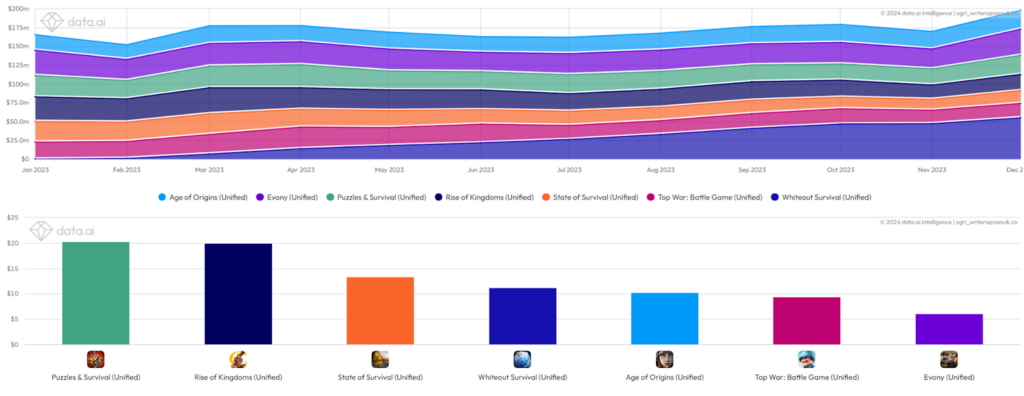
The reason for the heavy spend is the aforementioned king-of-the-hill dynamic, which allows only a select few leaders to occupy top positions. This allows and requires Century Games to add huge amounts of sales and events, including multiple small, yet simultaneous battle passes. After all, why stop at one?
Dazzling Quantities of Live-Ops
WS features countless sub-progressions, events, time-limited passes, world events, tournaments, and layered sales. All of these efforts count toward the ease with which players are able to spend to increase their resource balance and caps, which directly translate to 4X power.

Next to the numerous one-off live-ops the game features, as shown above, WS features elaborate seasonal events as well. These heavily themed events are full-blown, independent sets of features. The most elaborate and recent example is last year’s Christmas event, which included a visual progression to spruce up a Christmas tree, a limited-access progression of Tile Matching levels, two season passes, a cosmetic Gem top-up reward, Daily Tasks, and a Where’s Waldo-esque Santa Claus search to boot.

As expected, daily revenue numbers during these events show a clear spike. The fact that it’s easy to identify other (less-seasonal) celebrations that were active in the graph below, is a testament to the rich event calendar this game has to offer.


A last honorable mention goes to the highly enjoyable Fishing Tournament, which brought back memories to 2012, when indie hit Ridiculous Fishing got cloned. The Century team seemingly took inspiration from two out of the indie hit’s three mechanics (for some reason, the “shooting fish with your shotgun” part isn’t included) for the event’s ice fishing mini-game, resulting in by far the most original mini-game in WS to date.
Casino-Style VIP Treatment
As can be concluded from the chapter above, players are constantly incentivized to engage with what’s happening. For most players though, it’s not even necessary to convert. Simply being present and engaging can push the progression in the events quite far, but to actually complete one, maximum engagement and some serious Gem spend is required.
The key here is that WS provides its players with a constant influx of free Gems, and every level that is completed in Exploration mode awards Gems, among a few other features and live-ops doing the same. Without spending much and with normal, daily engagement, free players can rack up as much as ~80k Gems within a month of playing.
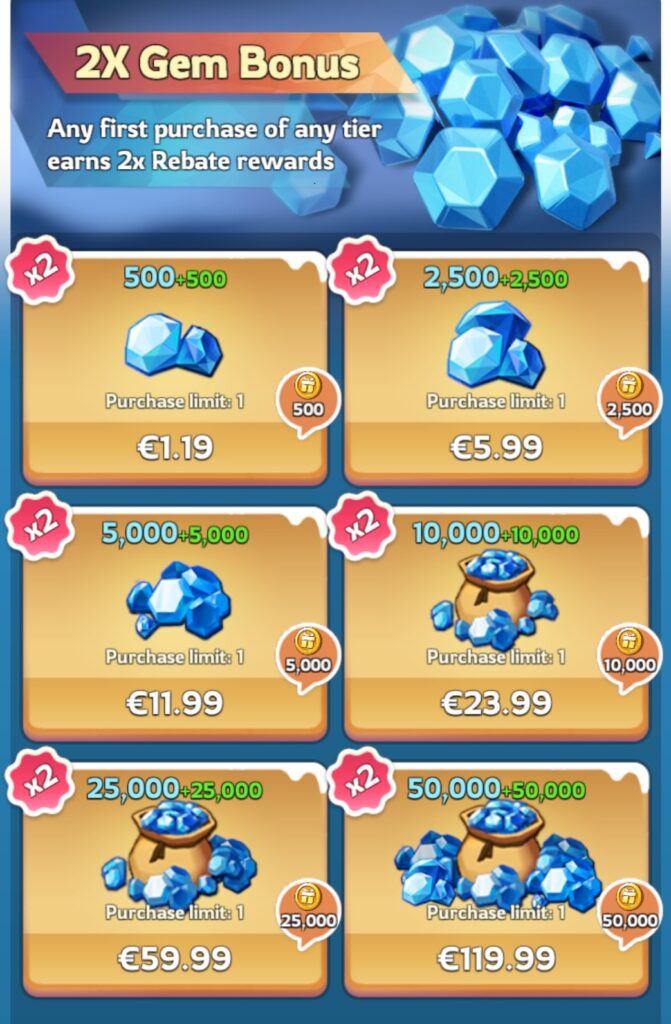
Even when including the double-up discounts for first purchases in the regular Gem shop, this amount of free Gems that are just handed out accounts for a value of €95, which is extremely generous. Therefore, one can conclude that WS monetization is strongly focused on high-spending players who are poised to:
- Structurally complete live-ops events
- Compete in high-tier PvP competitions
- Run alliances to achieve domination over a specific part of digital real estate on the world map
For this reason — like every 4X game — WS has an elaborate VIP system to categorize and incentivize these paying players to level up and unlock the perks that come with each added level of premiumness.

Any non-paying player will eventually be able to reach VIP level 3, maybe 4. After this, required VIP points get too high, and progressing through them will take numerous in-app purchases. What’s quite crazy is that reaching a VIP level doesn’t mean you’re able to reap the benefits. “VIP Time”, as the game calls it, needs to be specifically enabled to claim the daily bundle, which costs 10K diamonds for a month.

This means players who paid to reach these levels will have to keep investing to get their daily VIP payout. It is possible to invest the free Gems the game provides to be able to do this for a while, but it does add up.
Where Are the Ads Though?
It’s not easy to call out many top-100 games in the free-to-play market today that don’t rely on ad monetization at all, so the question above is not illogical. There are three factors that play into the lack of rewarded videos in 4X games like WS:
- Remember that earlier, we said strategy games like these are played by the most hardcore segment of gamers worldwide? This means that there aren’t enough other genres 4X games can send their players into anymore. Simply put, 4X is at the bottom of the in-game advertising funnel.
- When combining this with the monetization strategy laid out above, it becomes quite clear that 4X is the subgenre with the deepest spending behavior. This leads to developers of games like WS simply not wanting to risk churning their expensive, potentially high-paying players by serving them advertisements to other games.
- When comparing 4X daily active users with other genres, one can easily conclude that the daily player base of 4X games is very shallow. Serving ads at this volume is less of a no-brainer than it is in other genres with more players logging in daily. An approximate rule of thumb seems to be that a lower threshold of 20% of revenue through advertisements needs to be achievable to be really worth it.
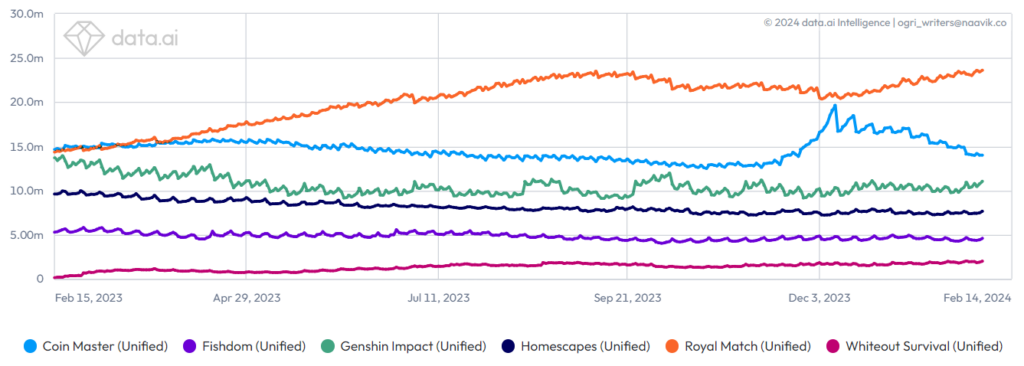
Just to illustrate, the graph above shows DAU developments for a few top games in popular genres: Luck Battle (Coin Master), Match-3 meta (Royal Match, Fishdom & Homescapes) and RPG (Genshin Impact).
Casual 4X Design: The little things
If you see someone playing WS on the train, the experience they are having seems like one of a regular 4X game. On the surface, it’s not easy to pinpoint the improvements Century Games has made to make the historically overwhelming 4X experience more friendly, but they are definitely there.
Especially because Century Games seemingly acquires much more casual players with its unique UA strategy, the game has to do everything in its power to carefully on-board as many of these players as they can into the 4X mechanics that come later. As described earlier, the first 1.5 hours of the WS experience does not involve any navigating or marching on the map. In comparison, the second action the player takes during the Rise of Kingdoms FTUE is sending troops to attack barbarians near their camp.
Overall, the initial experience of WS is friendly enough that more seasoned 4X players stick around long enough to unlock it, if they are not extremely impatient. Obviously, most casual players still drop off, which is visible in the game’s average retention rates over the last months. In comparison, Rise of Kingdoms — still the most successful 4X game of this day and age — has higher retention rates.

Of course, this is an unfair comparison, as the RoK audience is much more established than that of the much younger WS, and also because the former has been able to acquire players during a time when it was still much easier to find the right audience while the latter is forced to market more broadly.
Regardless of the seemingly low retention rates, the most important thing to take away is that the players who do stick around are taken care of well. Subtle yet effective visual and audio cues are peppered throughout the WS experience, making it the most accessible 4X game that’s out there, by a long shot. On top of that, there are a few concrete examples of features that improve the 4X player experience in a novel manner.
Help Me … Help You
The UX of WS contains numerous subtle, yet specific design improvements that help the player keep an overview and will contribute to the 4X genre as a whole moving forward, namely:
- The lighthouse
- The feeling of a lively world
- A sticky Idle mechanic
Let’s dive a bit deeper into these specific features to see what benefits to WS they bring.
The Lighthouse
First, the most prominent feature that serves as a bridge between the player’s base and the cluttered world map is the lighthouse. When players of most 4X games have to scour the map for creatures or enemies to battle, this building — which is used to help spell out and unlock the world map during the first sessions — highlights (or even spawns) a number of creatures on the world map every few hours and awards the player with additional rewards after they destroy them. It also generates team battle and exploration nodes that usually don’t even spawn in the world at all.

The lighthouse map also features a linear progression of increasingly strong creatures to be eliminated, creating another vector of progression that can be engaged with.
A Lively World
Secondly, the game successfully creates the feeling of a lively world using small features that promote survivor interaction, like a suggestions mailbox where named characters send inquiries to the player. Additionally, survivors have names, can get sick, and even die if the furnace isn’t on at night or in case of a really heavy storm. Even though the game replaces these dead survivors right away by having new survivors arrive, it still makes an emotional impact to see your survivors suffer.
The short narrative at the start of the game combined with the emotional angle of a survivor management fantasy invokes a subtle emotional connection. After a saddening amount of years of misogynistic ads, the whole industry knows that people who are freezing invoke the feeling of pity, and unfortunately no one seems to have found anything better yet.
What also contributes to the feeling of a lively world is the social gameplay between players that’s inherent to group-based 4X games. Engaging with an alliance of other players is heavily incentivized, as this unlocks essential opportunities and perks. While the features below are far from innovative for 4X by themselves, the way they are shown — in the middle of the screen, accompanied by a short audio cue — makes it a true game changer in terms of social engagement, as these all promotes synchronized sessions between players:
- A huge amount of benefits for members through the alliance’s tech, such as increased construction and resource gathering speed, troop march speed, health, and attack power
- A daily and weekly shop where alliance tokens (rewarded for social engagement) can be traded
- Shared rewards (loot chests) for collective attacks on nearby creatures
- Resource gathering and combat bonuses in the alliance’s territory
- Being protected by peace treaties between alliances, severely reducing the likelihood of being attacked by other players
- The ability to compete in world events
While the alliance perks above are helpful, the factor that contributes to the feeling of playing together the most is the Help feature, which enables players to speed up each other’s building and research timers when they’re online.

The Idle Mechanic
Lastly, getting back to the genre-mashing point of this article, WS features a pretty simple, yet crucial feature that heavily incentivizes players to return that is famously sticky in this regard: the Idle income mechanic in the Exploration feature. Important parts of the (early) game progression require an important resource (Steel) that can only be acquired through this mechanic.
Steel is required for building upgrades in the first ~10 hours of the game and serves as a pretty heavy progression gate, before it is slowly phased out. To be exact, Steel is used for upgrades of specific pieces of interior in the buildings (e.g. individual pieces of machinery in a shelter).
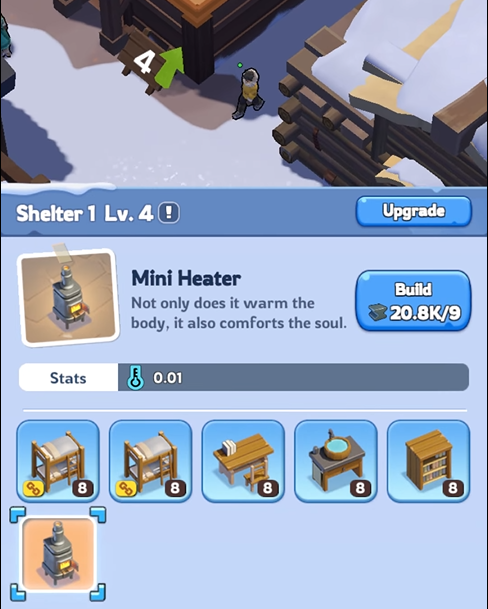
After all, the original promise of the FTUE needs to remain somewhat intact, even though the Steel currency is not part of the 4X game loop. The permanence of the Steel currency makes the initial experience more similar to Frozen City than may be visible at first glance.
The Future
...Of Whiteout Survival
Century Games had a killer year in 2023 with the success of WS. When compared and aligned by launch, the game’s revenue/download development looks stronger than that of any competitor’s.

But as successful as Century’s incumbent 4X game might seem, the active users curve has been stagnating since August last year, with a little more than 10M MAU that month.

This might indicate that WS’ furnace has already started cooling down. Especially when compared with the long tail that Rise of Kingdoms and Evony have managed to generate, the question if WS can keep growing is more relevant than ever. A theory that links WS’ MAU metrics with its retention rates is that the biggest spenders in the genre might want to stick with the more hardcore games in the genre (i.e. not WS) and for that reason, this game might burn out quicker. While MAU numbers for WS still look alright at the moment, its long-term retention (see the comparison to Rise of Kingdom a bit above) not being on par with its competitors suggests MAU will be more difficult to sustain in the near future.
...Of 4X As a Mechanic
A more interesting question revolves around the genre of 4X as a whole and if it can be kept relevant in the current market. Looking at the way WS is built shows the post-IDFA status quo, where the UA environment requires game designers to design multiple games in one, just to be able to reap the benefits of another genre’s cheaper CPIs.
Thinking back, mobile/free-to-play 4X games have already evolved a few times in the past since their inception in 2010.

Initially, experiences were mostly clunky, difficult to navigate and ultra-hardcore. This started changing with Lords Mobile (2016) and revolutionized with games like Star Trek: Fleet Command and Rise of Kingdoms in 2018. These games proved that 4X games can actually have a friendly UX, instead of being shown as a glorified e-commerce portal.
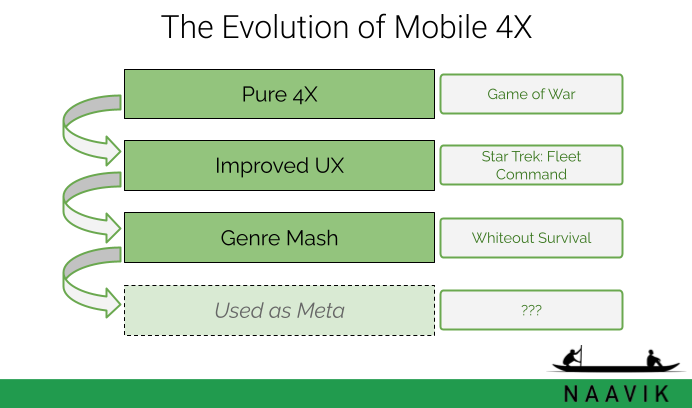
Today, 4X games reside in the genre-mashing era, which started with Puzzles & Conquest in 2019. 4X games these days have other mechanics in front of them, providing players with experiences that encompass more than just map traversal. Incumbents that fail to innovate like this won’t make the cut.
As we are all aware, the privacy-first world is here to stay. UA will never be as efficient as it used to be. This means that the most hardcore mobile free-to-play subgenres will either die or evolve. ‘4X March-Battle’ as a game mechanic, with its towering average revenue per user, won’t easily perish, as developers won’t want to give up on it. The value of this mechanic is in the meta, not the core, which means 4X — or a highly innovative, much more simplified version of this — will likely be rebranded as a metagame, paired with highly accessible (broad UA) core gameplay hooks. Who will be the one to revolutionize this mechanic?
A Big Thanks to Our Partners
This essay and all of Naavik’s freely available research wouldn’t be possible without the support of our Open Gaming Research Initiative partners. Learn more about them here.

Naavik has helped 250+ games teams with game & economy design, market research, user acquisition, and more. If interested in how Naavik can help your team, make sure to learn more and get in touch.








